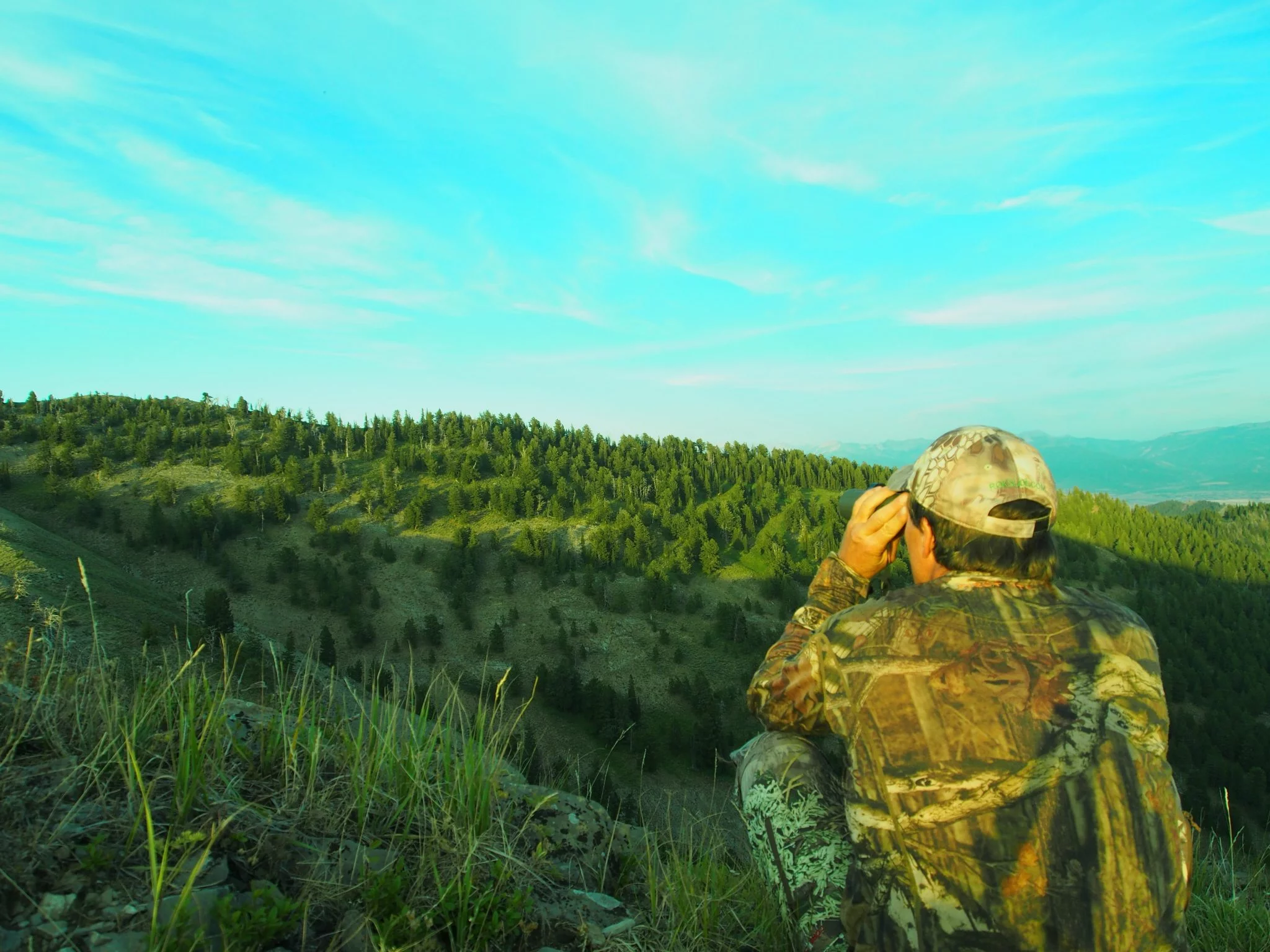
In my Rok Blog series, “Killing Big Mule Deer,”I named glassing as a mule deer hunter’s number one technique. My optics package has been honed over the years to include everything I need to find and kill outsized mule deer in a variety of Western habitats and seasons:
- A binocular in 7x or 8x power (preferably range-finder equipped))
- A spotting scope with 25-60 power (fixed or variable)
- A 15x-20x binocular (tripod mounted)
To understand why I choose a lower power binocular, see Glassing
The Binoculars
I’ve been testing the Swarovski EL Range 8×42 binoculars since mid-April. These are Swarovski’s answer to Leica’s Geovid and Zeiss’s Victory rangefinding binoculars (and answer they did!) I’ve used the EL Range 8x42s all through the summer scouting season putting over 30 days on them. While I’ll continue to rely on them for the fall hunts, I’d like to share some initial thoughts now.
The EL Range 8x42s are relatively light and compact especially considering they handle both glassing and ranging in one instrument. Weighing in at 32 ounces, I hardly notice them around my neck. This is due in part to their high-quality neck strap (see more in the video below.) At 6.5 inches tall by 4.5 inches wide, I’d hardly call them bulky.
As far as viewing quality, I can’t say enough. With clarity, brightness, and a great field-of-view, watching bucks at any hour between the extremes of legal shooting light is a true pleasure. I won’t pretend to be an optics guru and throw around terms few people fully understand, (including me). I will, however, offer that I’ve spent thousands of hours over 25 years using all brands of glass from cheap to ultra-expensive in all terrain from desert to high country. With that kind of experience behind me, I know what great glass is and how it should perform. These EL Range 8×42 binoculars sit at the top of the heap in my opinion.
The 8x42s feature separate left and right dioptric adjustment rings on each barrel along with a traditional center focusing wheel (controls both left/right focus simultaneously). Once set, the rings lock down, focus is held, and all focus adjustments are made from the center wheel. Virtually all of the binoculars I’ve owned have had the traditional right dioptric/center focusing wheel focus. Being able to focus the left diopter allows the glasser to fine tune the binocular to his vision an extra degree over traditional.
The reason for the separate diopter adjustment on each barrel is really because the range readout is displayed in the left barrel while the aiming dot is shown in the right barrel—but no matter why, you get razor-sharp focus.
I always set the initial focus on my binoculars mounted on a tripod and fixed on an object with high contrast (like a white-barked aspen against a dark background) between 300 and 500 yards. The ELs brought awesome clarity after setting the adjustments this way. By locking the dioptric rings down, I’m set for good. In fact, I set mine back in April and it’s late August as I write this. I’ve never had to refocus the separate diopters.
The light-gathering capability is exceptional. One reason I choose a lower power is for this capability, but these ELs really excelled in category. I tested them against a Zeiss 7×42 Dialyt. I found the ELs had a few more minutes advantage due either to the clarity or the modern coatings. Not sure which, but it doesn’t matter. Hunted mule deer bucks in season are rarely in the open and when they are, it’s usually at the fringes of legal shooting light. The ELs are up to the task and better.
The Rangefinder
Having ran both a separate binocular and rangefinder for the last 11 years, I was just giddy at the thought of one device that could do both. Considering that the Swarovski EL Range 8×42 does both jobs fabulously, I’m a true believer.
In four months and over a thousand readings, I’ve tested the EL Range from 32 to 2,000 yards. Only occasionally do I have to hit the range button twice to get a reading. The settings allowed me to adjust the brightness of the LCD display. I’m truly color blind (ask my mom, wife, doctor, and all my teachers) so I’ve always had a difficult time seeing the orange numbers many rangefiners report in. The ELs have five brightness levels. I choose the brightest and can easily read the display even in the noon-day sun.
The best part of the rangefinder is the “shoot-to” distance is displayed instantly under the actual range. If the angle is enough to change your point of impact, the EL Range calculates it. I’ve tested it on 50-degree inclines. I’m taken back at the edge this one feature gives an archer, muzzleloader hunter, or rifleman in the varied terrain of the West.
Swarovski’s SWAROAIM is an integrated inclinometer that instantly calculates correct hold at any angle. A buck bedded under this tree would be 56 yards away, but you’d shoot for 49 yards.
A few items we rarely think about—the neck strap and the lens covers—are very well designed in the ELs. The neck strap is the best I’ve ever seen. It’s fully adjustable in length for different carries and extremely comfortable.
The lens covers rank right up there with the neck strap. They are designed to be adjusted for the distance between our eyes (interpupillary distance) and they work very well. Many lens covers attempt to cover each diopter together and end up flopping around while letting dust, rain, and snow onto the lenses. Not these. They seal tight.
Check out this short video on those operations and benefits:
If there is a chink in the armor of the ELs, it is the lower range limit of 32 yards. As a bowhunter, I sometimes need to read distances shorter than that, like when trying to sneak an arrow below a branch at a bedded buck on a steep slope. Talking with other owners of the ELs, they say if it’s shorter than 32, you don’t need a rangefinder. I’d almost agree but would crown the ELs perfect in all categories if they ranged down to 20 yards.
Another item worth mentioning is the rangefinder button is located on the left side of center. When operating the ELs with both hands, this placement seems natural. However, when I’m holding my bow in my left hand, as I would when preparing to shoot, I can barely reach the button with the binocular in my right hand. I have to tilt the binoculars so that my right middle finger can reach the button. I can do it, but would prefer a button on the right side of center for right-handed bowhunters. This is one instance where right handers can feel the pain south paws experience daily.
So far, I’d say the ELs are the near-perfect optic for the Western hunter. They excel in both optical quality, rangefinding capability, ease of use, and comfort. Swarovski can put another feather in her cap when it comes to offering the highest quality optical instruments.
I’ll be using these EL Range Binoculars (and plenty of other interesting gear) on my archery hunt that starts in just a few days. Follow along by subscribing to the Rok Blog upper right under Fitness/Other links at “Subscribe to blog”.

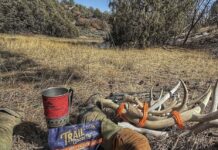

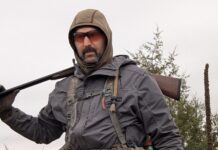

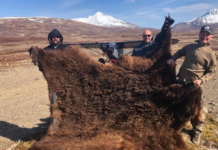

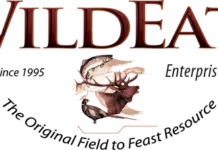





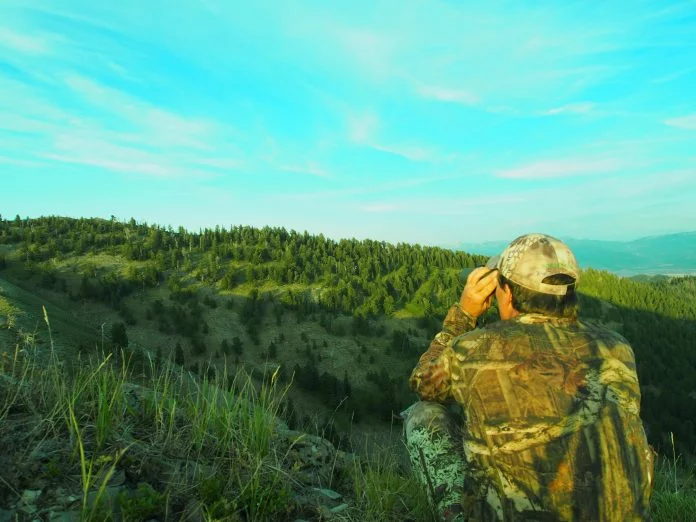
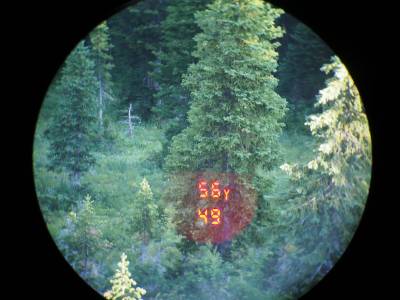

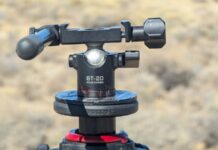



For curiosity sake, will you throw them up with a pair of sunglasses or non prescription glasses and see what eye relief is? I have only found one company that makes it comfortable for me, to use eyeglasses and still see adequately. I am always curious because of the big 3 German glass companies Swarovski has been the best I’ve looked through.
Shane, I’m not an eye glass wearer, but I do wear reading glasses. I just threw a pair on and headed outside. With the eye cups screwed down, I had plenty of eye relief and an extra 1/4″ to spare.
Hey Robby, nice write up. I just picked up a pair of SLC’s. 10×42. Bought them broke, can’t wait to get them back from Swaro C/S. I just have one question for you, is Swaro letting you give your EL’s away when your done with your testing? If so I want to sign up for that giveaway. 🙂
Hi John, sorry man, I couldn’t swing that one for you! Maybe someday, though. You’ll really like those SLCs and in a 10x, they’ll make a pretty good tripod binocular, too.
Keep us posted
Comments are closed.